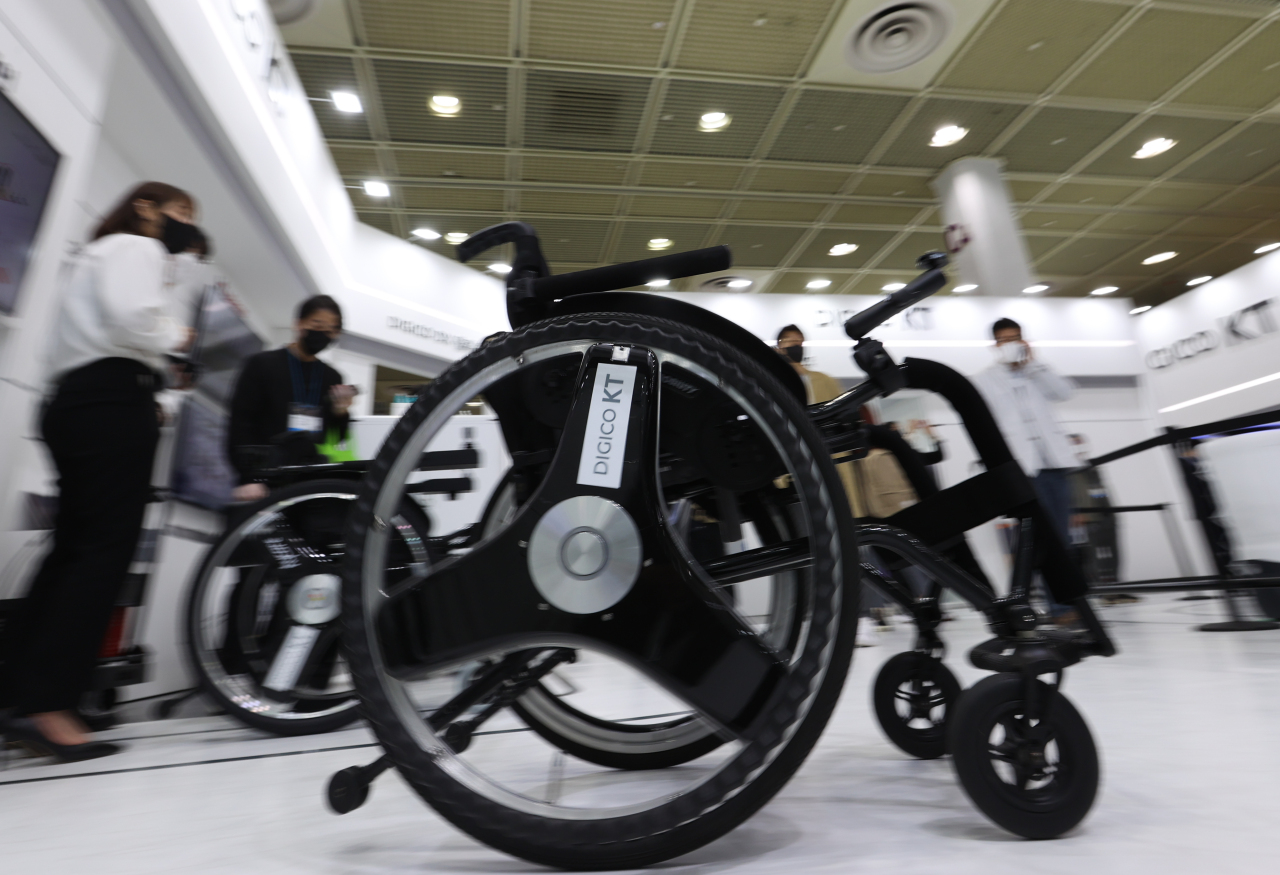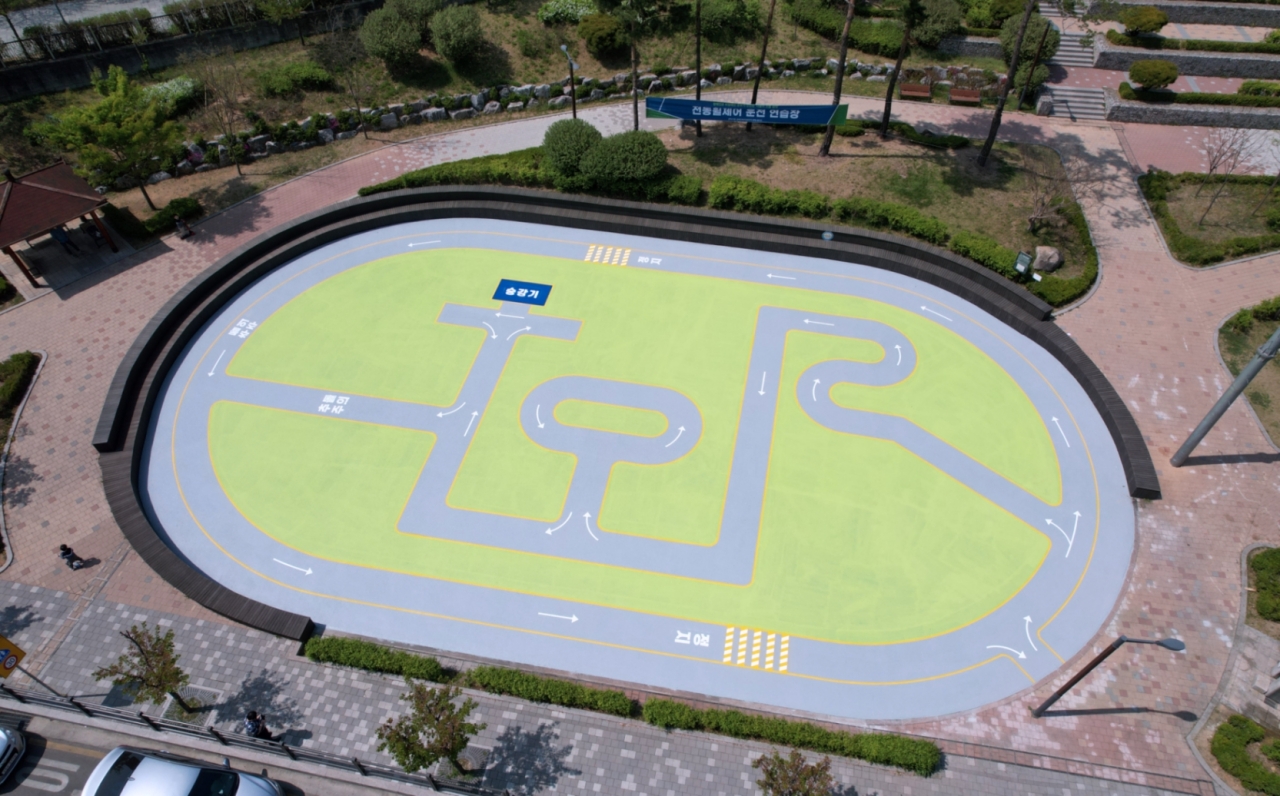Steering in the wrong direction :Safety education for electric wheelchairs still lacking
By Lee Jung-YounPublished : May 13, 2022 - 16:04

As the number of registered disabled people in South Korea hit 2.64 million, accounting for 5.1 percent of the total population, electric wheelchairs are becoming more common.
But related safety education is still hard to find, despite the need for it being flagged up seven years ago.
The last survey conducted by the Korea Consumer Agency on the use of electric mobility aids was in 2015. At the time, the number of users was increasing as well as the number of accidents involving them.
In the survey, 35.5 percent of electric wheelchair users said they had experienced accidents.
About 30 percent of the whole participants, including both disabled and non-disabled, did not even know that electric wheelchairs were required to stay on sidewalks.
The report concluded by calling for proper education on electric assist devices for both disabled and non-disabled people. But since then, no significant progress has been made.
Motorized device without training?
“Every device with wheels is directly related to life-or-death issues” said Yoo Seong-moon, researcher at the Central Assist Device Center under National Rehabilitation Center.
However, no training or license is required for an electric wheelchair. Users only have to read the instruction manual to begin using one. According to Yoo, most manufacturers only provide brief explanations about the manual.
“Considering that most electric wheelchair users are disabled or elderly, continuous and repetitive education is necessary, which is not easy” He added.
Yoo noted that electric wheelchair education and license qualifications are not mandatory in Korea. Efforts to set up a private qualification system, which has been repeatedly made by various institutions, has failed every time due to lack of social awareness.
Local governments and mobility centers are endeavoring to provide theoretical and practical education but attendance is low due to the difficulties of access faced by disabled and elderly people, if the program is conducted at the smallest regional level.
Make education approachable

On April 25, Gwanak-gu announced that an electric wheelchair practice ground construction had been completed. The practice ground, located in the Nakseongdae Outdoor Playground in Gwanak Mountain Park, was designed with the advice of the Road Traffic Authority. It was carefully designed to guarantee users safety, such as the floor with elastic packaging method effective for preventing injuries.
The facility is the country’s first electric wheelchair practice ground run by a local government. Considering that private electric wheelchair practice areas are also rare, it is an unrivaled facility nationwide.
An official from the Welfare Department for the Disabled at Gwanak-gu office said, “In order to encourage understanding wheelchair users’ lives, we are planning to create comprehensive programs for both device users, people from related institutions, organizations, and residents nearby.”
Such infrastructure, both in terms of the space and the education provided, is an exemplary case.
“There were some temporary programs carried out in rented vacant lots or small private practice space inside certain apartment complex. But formally constructed, permanent facilities for wheelchairs are very rare. Gwanak-gu’s decision is praiseworthy,” Yoo said.
He emphasized that public-private cooperation should be established.
“Installing more assist device centers, and making it as approachable as pharmacy or grocery stores for the disabled should be the key goal,” he said.








![[KH Explains] How should Korea adjust its trade defenses against Chinese EVs?](http://res.heraldm.com/phpwas/restmb_idxmake.php?idx=644&simg=/content/image/2024/04/15/20240415050562_0.jpg&u=20240415144419)










![[Today’s K-pop] Stray Kids to return soon: report](http://res.heraldm.com/phpwas/restmb_idxmake.php?idx=642&simg=/content/image/2024/04/16/20240416050713_0.jpg&u=)